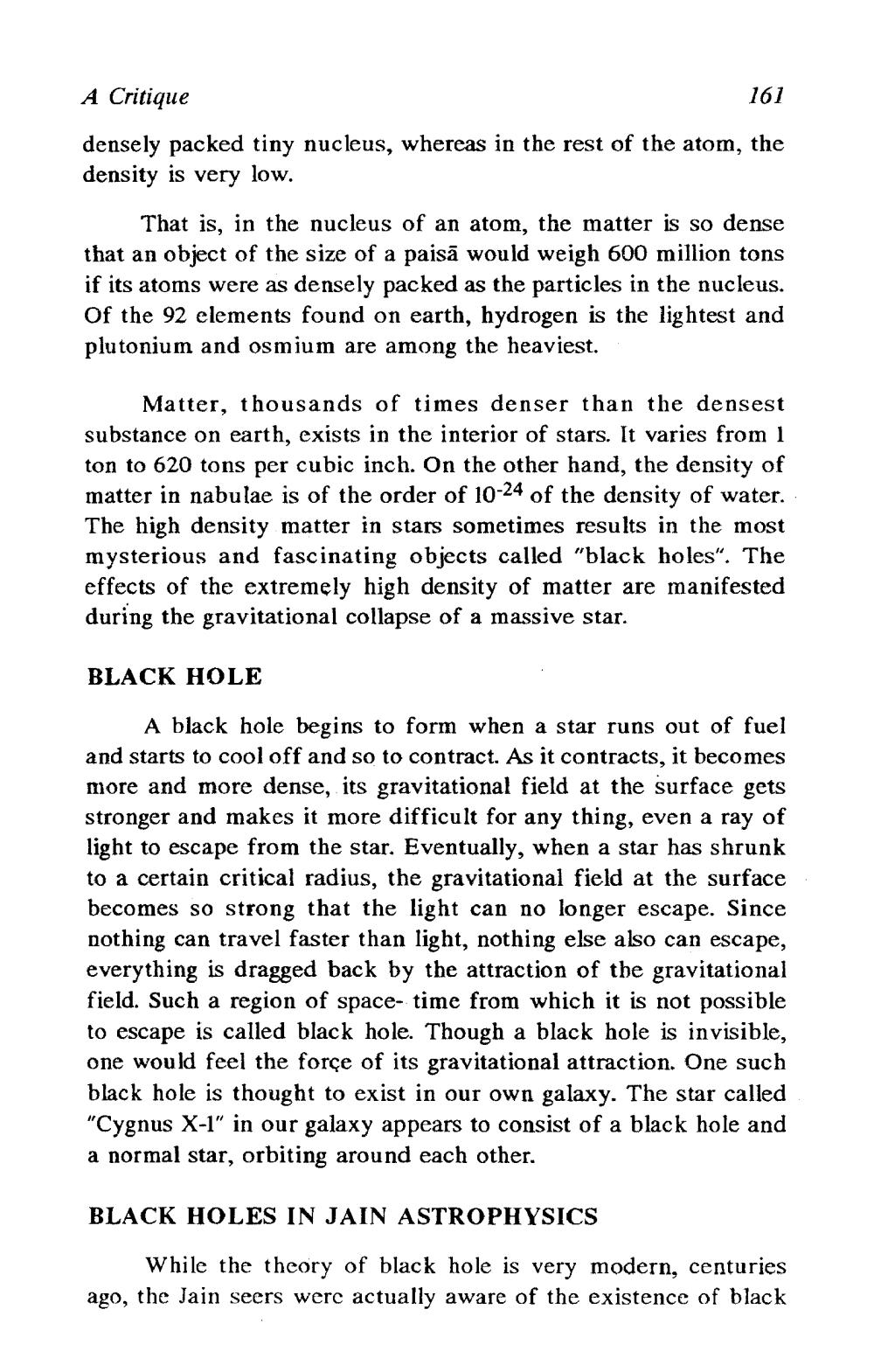________________
A Critique
161 densely packed tiny nucleus, whereas in the rest of the atom, the density is very low.
That is, in the nucleus of an atom, the matter is so dense that an object of the size of a paisā would weigh 600 million tons if its atoms were as densely packed as the particles in the nucleus. Of the 92 elements found on earth, hydrogen is the lightest and plutonium and osmium are among the heaviest.
Matter, thousands of times denser than the densest substance on earth, exists in the interior of stars. It varies from 1 ton to 620 tons per cubic inch. On the other hand, the density of matter in nabulae is of the order of 10-24 of the density of water. The high density matter in stars sometimes results in the most mysterious and fascinating objects called "black holes". The effects of the extremely high density of matter are manifested during the gravitational collapse of a massive star.
BLACK HOLE
A black hole begins to form when a star runs out of fuel and starts to cool off and so to contract. As it contracts, it becomes more and more dense, its gravitational field at the surface gets stronger and makes it more difficult for any thing, even a ray of light to escape from the star. Eventually, when a star has shrunk to a certain critical radius, the gravitational field at the surface becomes so strong that the light can no longer escape. Since nothing can travel faster than light, nothing else also can everything is dragged back by the attraction of the gravitational field. Such a region of space-time from which it is not possible to escape is called black hole. Though a black hole is invisible, one would feel the force of its gravitational attraction. One such black hole is thought to exist in our own galaxy. The star called "Cygnus X-l" in our galaxy appears to consist of a black hole and a normal star, orbiting around each other.
BLACK HOLES IN JAIN ASTROPHYSICS
While the theory of black hole is very modern, centuries ago, the Jain seers were actually aware of the existence of black




